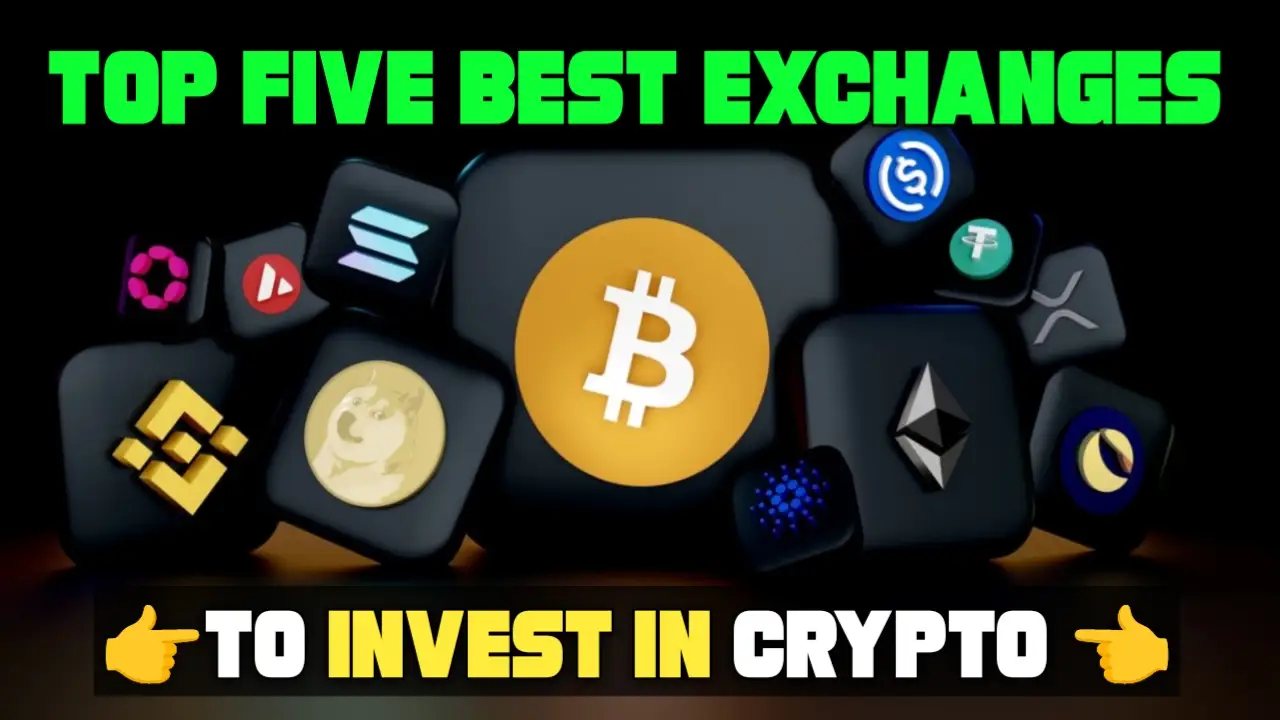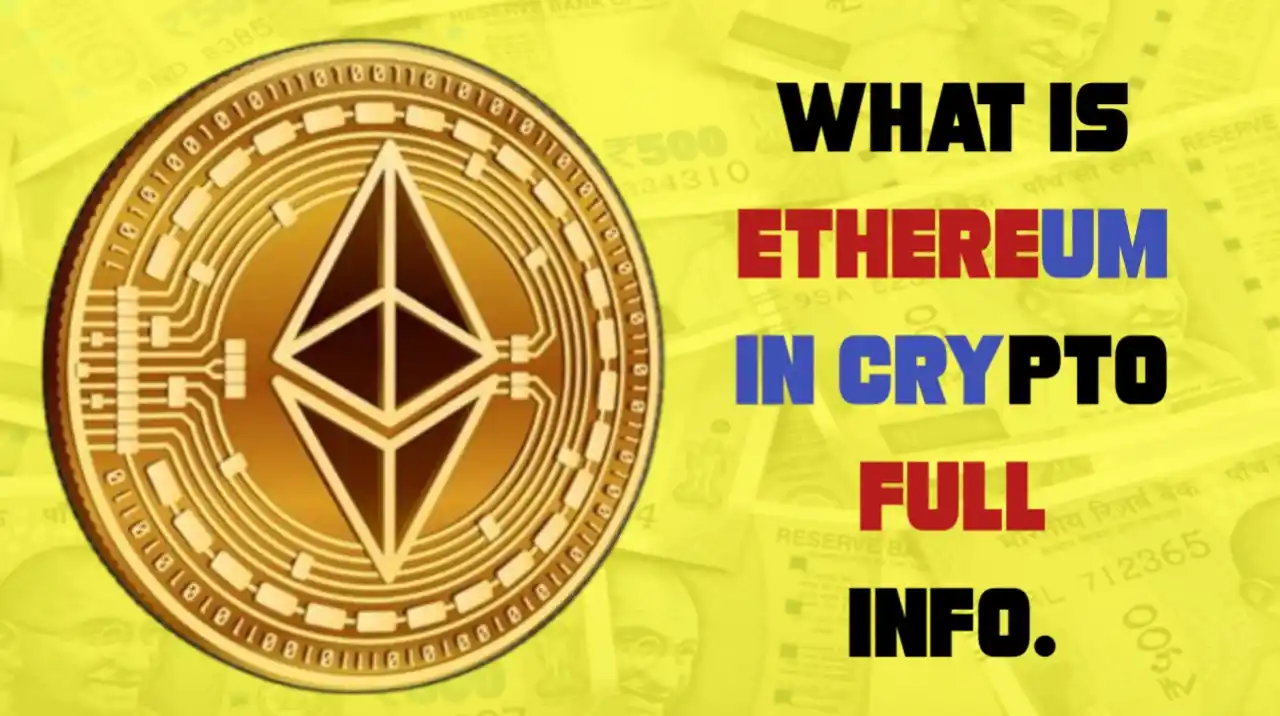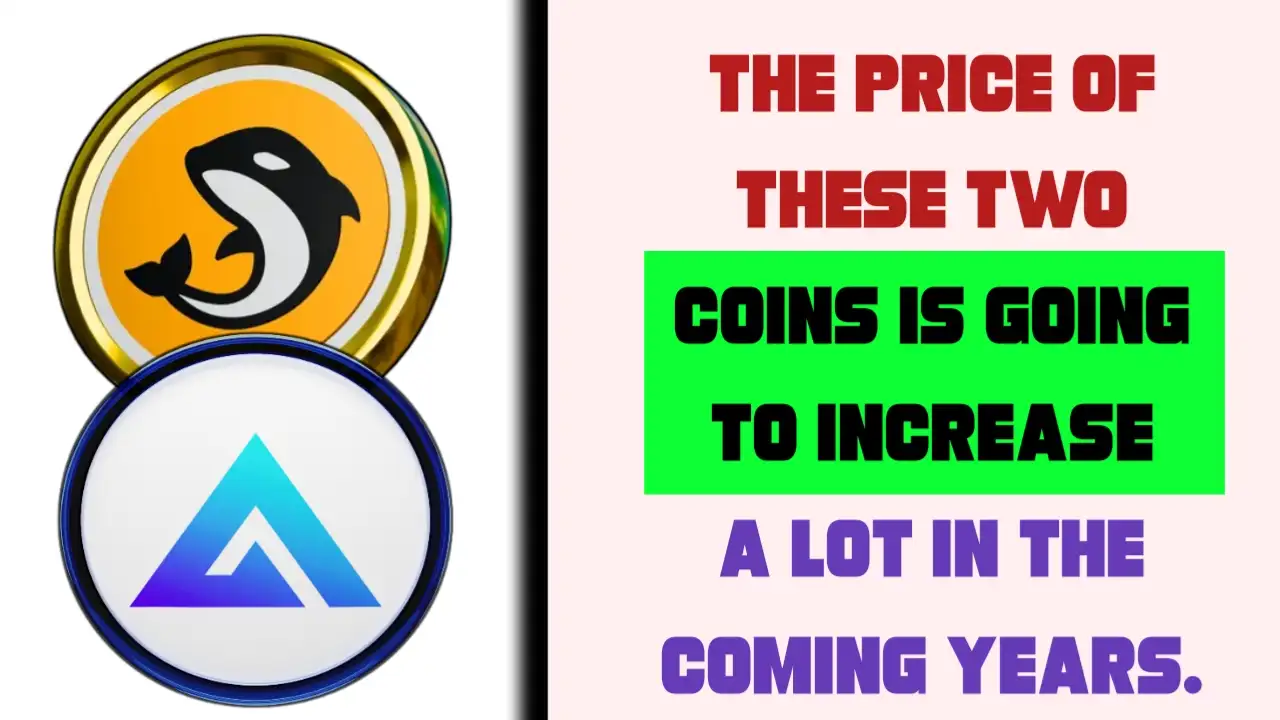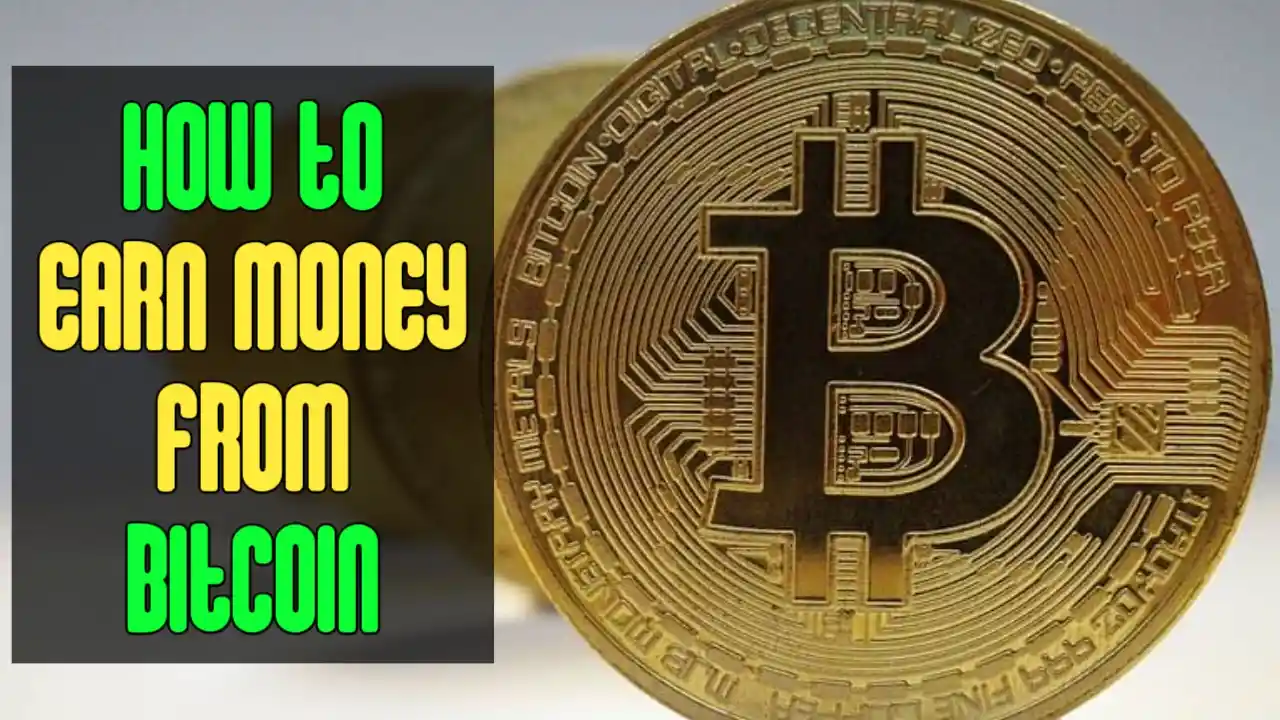WHAT IS BINANCE: Binance is one of the world’s largest and most popular cryptocurrency exchanges, founded in 2017 by Changpeng Zhao (CZ). It allows users to buy, sell, and trade a wide range of digital assets such as Bitcoin, Ethereum, and Binance Coin (BNB), alongside offering various services like spot trading, futures trading, staking, and lending. Binance also provides tools for developers, educational resources through Binance Academy, and a platform for launching new cryptocurrency projects via Binance Launchpad. Known for its high liquidity, low fees, and advanced trading features, Binance serves millions of users globally, though it has faced regulatory scrutiny in some regions as governments continue to develop cryptocurrency policies.
Some interesting information about Binance
Here are some interesting facts about Binance that highlight its unique features and impact on the cryptocurrency world:
- Rapid Growth: Binance became one of the largest cryptocurrency exchanges in the world just months after launching in 2017. Its growth was fueled by its low fees, extensive list of supported cryptocurrencies, and fast transaction processing.
- Binance Coin (BNB): Binance created its own native cryptocurrency, Binance Coin (BNB), which was initially used to pay for trading fees on the platform at a discount. Over time, BNB has grown to be used in many other ways, including paying for transaction fees on Binance Smart Chain (BSC), participating in token sales on Binance Launchpad, and even as a payment method for various products and services.
- Innovative Features: Binance has consistently been at the forefront of offering new features for cryptocurrency traders. It was one of the first to introduce crypto-to-crypto trading, futures contracts for cryptocurrencies, and even a staking platform where users can earn rewards by holding certain assets.
- Binance Launchpad: Binance Launchpad allows users to participate in Initial Exchange Offerings (IEOs), where new cryptocurrencies can raise funds through token sales directly on the Binance platform. This has helped several successful projects gain exposure.
- Binance Smart Chain (BSC): Binance launched its own blockchain, Binance Smart Chain, in 2020. BSC aims to provide fast and low-cost transactions for decentralized applications (dApps) and smart contracts, making it a competitor to Ethereum.
- Global Reach: Despite facing regulatory challenges in some countries, Binance has continued to expand its operations and support users in many regions around the world. It has localized versions of the platform for countries like the UK, Japan, and Singapore.
- Decentralized Finance (DeFi) Movement: Binance has played a significant role in the DeFi space with its Binance Smart Chain, supporting decentralized finance projects that operate outside of traditional financial systems. Many DeFi projects, such as PancakeSwap, operate on BSC due to its lower fees compared to Ethereum.
- Security Measures: While Binance has faced security breaches in the past, it remains focused on improving security. It employs advanced measures such as two-factor authentication (2FA), cold storage wallets, and Secure Asset Fund for Users (SAFU), an insurance fund created to protect users in case of hacks.
- Educational Resources: Binance has invested in educating the public about cryptocurrency and blockchain technology. Through Binance Academy, it offers free courses, articles, and videos to help users understand how digital assets work and how to trade them safely.
- Binance Charity: Binance also has a charitable arm, Binance Charity, which focuses on blockchain-powered philanthropy. It uses blockchain to improve transparency in charitable donations, aiming to reduce fraud and ensure donations reach the intended recipients.
Binance’s continuous innovation, broad range of services, and focus on community engagement have made it a major player in the cryptocurrency world.
Here’s a human table with varied information about Binance:
| Category | Details |
|---|---|
| Founder | Binance was founded by Changpeng Zhao (CZ) in 2017. He is known for his experience in the tech and crypto industry. |
| Headquarters | Initially founded in China, Binance has since become a globally decentralized platform with offices around the world. |
| Core Services | Binance offers services such as spot trading, futures trading, staking, lending, and NFT marketplace. |
| Binance Coin (BNB) | BNB is Binance’s native cryptocurrency, originally launched as a token for discounted fees but now has broader uses across the platform. |
| Trading Volume | Binance is the largest cryptocurrency exchange by trading volume, handling billions of dollars in trades daily. |
| Binance Smart Chain (BSC) | BSC is a blockchain launched by Binance in 2020, enabling decentralized applications (dApps) and DeFi projects with faster and cheaper transactions. |
| Security | Binance uses advanced security features such as two-factor authentication (2FA), cold storage for most funds, and a Secure Asset Fund for Users (SAFU) to protect user assets. |
| Binance Academy | Binance offers an educational platform, Binance Academy, providing free resources on blockchain, crypto trading, and security for beginners and advanced users. |
| Binance Launchpad | Launchpad helps new crypto projects raise funds through Initial Exchange Offerings (IEOs), giving users early access to promising tokens. |
| Regulatory Challenges | Binance faces regulatory scrutiny in several countries, including the U.S., U.K., and Japan, due to evolving cryptocurrency laws. |
| Partnerships & Sponsorships | Binance has formed partnerships with organizations like FC Porto and Paris Saint-Germain (PSG) to increase global crypto adoption. |
| Binance Visa Card | Binance offers a Visa Card that allows users to spend their crypto assets directly at millions of merchants worldwide. |
| DeFi and NFTs | Binance supports the DeFi (Decentralized Finance) ecosystem and operates its own NFT marketplace, enabling users to create, buy, and sell digital collectibles. |
| Binance Labs | Binance Labs is the venture arm of Binance, investing in blockchain startups and projects to foster innovation in the crypto space. |
| Global Reach | Binance operates in over 180 countries, offering services to a wide range of users, though it has faced restrictions in certain regions. |
| Innovative Features | Features like Binance Earn, Binance Pool (mining), and Binance Cloud (exchange-as-a-service) demonstrate Binance’s commitment to innovation in the crypto space. |
Advantages and disadvantages of trading with Binance
Here are some advantages and disadvantages of trading with Binance:
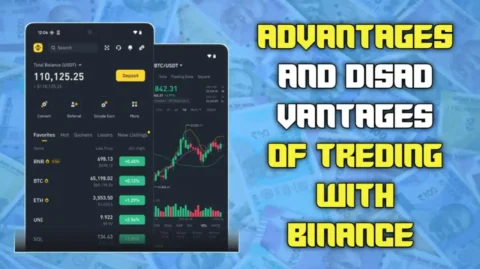
Advantages of Trading with Binance:
- Low Trading Fees:
- Binance is known for having some of the lowest trading fees in the industry, typically around 0.1% per trade. Fees can be reduced even further if users pay with Binance Coin (BNB).
- Wide Range of Cryptocurrencies:
- Binance supports over 500 cryptocurrencies, including popular ones like Bitcoin (BTC), Ethereum (ETH), and Binance Coin (BNB), as well as many smaller altcoins. This gives traders extensive options for diversifying their portfolios.
- Advanced Trading Features:
- Binance offers a variety of advanced trading options, such as futures contracts, margin trading, staking, and options, catering to both beginners and professional traders.
- High Liquidity:
- As one of the largest exchanges by volume, Binance offers high liquidity, ensuring faster and easier transactions with minimal slippage.
- Binance Smart Chain (BSC):
- Binance’s native blockchain, Binance Smart Chain, allows for fast, low-cost transactions and supports decentralized applications (dApps) and DeFi projects.
- Educational Resources:
- Binance Academy provides free educational content on cryptocurrency trading, blockchain technology, and security, helping beginners understand the market.
- Security Features:
- Binance implements strong security protocols like two-factor authentication (2FA), cold storage, and the Secure Asset Fund for Users (SAFU) to protect users’ assets.
- Global Presence:
- Binance operates in over 180 countries, making it one of the most globally accessible exchanges in the market.
- Launchpad and IEOs:
- Binance Launchpad offers users the opportunity to participate in Initial Exchange Offerings (IEOs) and gain early access to promising new projects.
- Multiple Payment Options:
- Binance supports multiple payment methods, including bank transfers, credit/debit cards, and P2P trading, making it easy for users to deposit and withdraw funds.
Disadvantages of Trading with Binance:
- Regulatory Scrutiny:
- Binance has faced regulatory issues in multiple countries, including the U.S., U.K., Japan, and Germany, due to concerns over compliance with local financial regulations. This has led to temporary service restrictions in some regions.
- Complex Interface for Beginners:
- While Binance offers a range of features, its platform can be overwhelming for beginners due to its complex interface and advanced trading tools.
- Limited Fiat-to-Crypto Support in Some Regions:
- Binance’s fiat-to-crypto options may not be available in certain countries, limiting users’ ability to easily deposit or withdraw local currencies.
- High Withdrawal Fees for Certain Cryptos:
- Some cryptocurrencies on Binance have higher withdrawal fees, especially when transferring out of the platform to external wallets or exchanges.
- Risk of Hacking:
- Like any large exchange, Binance has been the target of cyberattacks in the past, with one notable hack in 2019 resulting in a loss of $40 million worth of assets. While Binance has since bolstered its security, risks still remain.
- Customer Support Issues:
- Some users report slow response times and challenges when trying to resolve issues with Binance’s customer support, especially during times of high traffic or market volatility.
- Limited Customer Support for Some Countries:
- Binance does not offer 24/7 customer support in all regions, and certain languages or countries might not have access to comprehensive help.
- Complex Fee Structure for Some Services:
- While trading fees are low, Binance has a complicated fee structure for different services, like futures trading and withdrawals, which may confuse new users.
- Geographic Restrictions:
- Due to regulatory concerns, Binance may have service restrictions or be completely unavailable in certain countries, making it inaccessible for users in some regions.
- Overcrowded Market:
- Binance’s high volume and traffic can sometimes lead to delays or server downtimes during periods of market volatility, potentially affecting trading activity.
Overall, Binance offers a robust and feature-rich platform for both beginner and professional traders. However, users should consider its regulatory challenges, security risks, and the complexity of the platform before trading.
Can we trade with Binance in India?
Yes, you can trade with Binance in India. Binance is accessible to users in India, and Indian traders can sign up on the platform to buy, sell, and trade a wide range of cryptocurrencies.
1. Regulatory Concerns:
- Uncertainty Around Regulations: India’s regulatory framework for cryptocurrency is still evolving. The Indian government has yet to implement clear regulations for the crypto market, which has led to concerns among users regarding the future of crypto trading in the country.
- Cryptocurrency Ban Discussions: There have been ongoing discussions in India about potential legislation to ban or regulate cryptocurrencies more strictly. However, as of now, no definitive ban has been enacted, and platforms like Binance continue to operate in the country.
2. Fiat-to-Crypto Withdrawals:
- Binance allows Indian users to trade cryptocurrencies, but fiat-to-crypto services (such as direct INR (Indian Rupee) deposits and withdrawals) may face limitations due to the uncertain regulatory environment. Binance also offers P2P trading where users can trade directly with each other using INR.
- Third-Party Payment Gateways: Users can use third-party services like Paxful, WazirX (which Binance acquired in 2019), and other local exchanges to deposit INR into their Binance accounts via P2P (peer-to-peer) trading.
3. Binance and WazirX Integration:
- Since Binance acquired WazirX in 2019, users in India can also trade on Binance through WazirX, which provides more seamless integration with Indian rupees (INR) for deposits and withdrawals. Users can transfer funds between Binance and WazirX accounts and access a wider range of cryptocurrencies.
4. Use of Binance Features:
- Indian users can access the full range of Binance services, including spot trading, futures, staking, DeFi, and NFTs, subject to the platform’s terms and conditions.
Conclusion:
While Binance is still operational in India, traders should stay informed about any regulatory changes, as the cryptocurrency landscape in India may change in the future. Additionally, users should be cautious about potential challenges regarding fiat deposits and withdrawals in INR, and consider using P2P platforms or WazirX for a more localized experience.
Who and how to trade crypto from Binance
Who Can Trade Crypto on Binance?
Anyone who meets the following criteria can trade on Binance:
- Age Requirement: You must be at least 18 years old to create an account and trade on Binance.
- Legal Compliance: Users must be located in a country where Binance services are available. However, some countries have restrictions or have banned access to Binance due to regulatory reasons (e.g., the U.S., U.K., and Japan have imposed certain restrictions).
- Account Verification: Binance requires you to complete KYC (Know Your Customer) verification to access certain features like higher withdrawal limits and fiat-to-crypto transactions. This process involves submitting identification documents and a selfie for verification.
How to Trade Crypto on Binance?
Follow these steps to start trading on Binance:
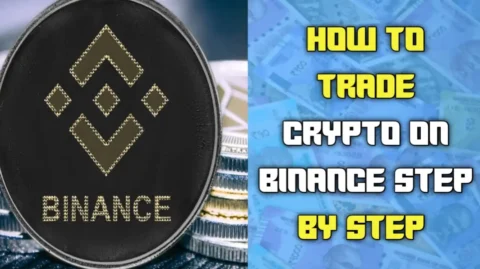
Step 1: Create a Binance Account
- Sign Up: Go to the Binance website and click Sign Up to create an account.
- Email or Mobile Number: You can sign up using your email address or mobile phone number.
- Set Password: Choose a strong password for your account.
- Security Verification: Set up Two-Factor Authentication (2FA) to secure your account.
Step 2: Verify Your Identity
- Complete KYC: To increase your withdrawal limits and access full functionality, you’ll need to complete the KYC verification by submitting identity proof documents (passport, driver’s license, or national ID) and a selfie.
Step 3: Deposit Funds
- Deposit Cryptocurrency: You can deposit crypto directly from another wallet by sending it to your Binance wallet address.
- Deposit Fiat Currency: If you want to deposit traditional money (fiat) like USD, EUR, INR, etc., Binance supports fiat deposits via bank transfers or credit/debit cards. In some countries, Binance also offers P2P (peer-to-peer) trading, where you can buy crypto directly from other users using your local currency.
Step 4: Navigate to the Trading Platform
- Spot Trading: For beginners, the Spot Trading section is the simplest. Navigate to the Markets tab, select the Spot option, and choose the trading pair you want (e.g., BTC/USDT or ETH/BTC).
- Advanced Trading: For more experienced traders, Binance offers features like Futures, Margin Trading, and Options. These are more complex, so you need to be cautious and have a solid understanding of how they work before using them.
Step 5: Make a Trade
- Select a Pair: Choose a trading pair (e.g., BTC/USDT or ETH/BTC) from the trading interface.
- Order Types: Binance offers various types of orders:
- Limit Order: Set a specific price at which you want to buy or sell.
- Market Order: Buy or sell the current price.
- Stop-Limit Order: Set conditions for the order to be executed when the price hits a specified level.
- OCO (One-Cancels-the-Other): A combination of two orders, allowing you to set a stop-loss and take-profit order at the same time.
- Place Order: Once you’ve selected your order type, enter the amount and price, then confirm the order.
Step 6: Monitor Your Trades
- Check Your Order Status: After placing an order, you can check its status under the Open Orders section.
- Completed Orders: Once your order is filled, it will appear in the Order History section.
- Account Overview: You can view your balance, transaction history, and portfolio under the Wallet tab.
Step 7: Withdraw Funds
- Withdraw Crypto: To withdraw your crypto, go to Wallet > Fiat and Spot, select the crypto you want to withdraw, and enter the address of the wallet you’re sending it to.
- Withdraw Fiat: If you want to convert your crypto back to fiat and withdraw it to your bank account, you can use Binance’s fiat withdrawal methods (via bank transfer, credit/debit card, or P2P).
Important Tips for Trading on Binance:
- Security: Always enable 2FA and take security seriously. Be cautious of phishing scams and use a strong password.
- Use Stop-Loss: If you’re trading with margin or futures, it’s recommended to use a stop-loss order to minimize potential losses.
- Understand Fees: Binance has competitive fees, but they vary depending on the type of trade, and you may receive discounts if you use Binance Coin (BNB) to pay for fees.
- Start Small: If you’re new to crypto trading, start with small amounts and gain experience before committing larger funds.
- Educate Yourself: Make use of Binance Academy for learning about various crypto trading concepts and blockchain technology.
By following these steps and tips, you can start trading cryptocurrencies on Binance effectively and securely.
FAQs –
Q 1. How much does it cost to trade with Binance?
Answer – The cost to trade on Binance depends on several factors, including the type of trade, your trading volume, and whether you use Binance’s native token, BNB, to pay for fees.
Standard Trading Fees:
- Spot Trading: Binance charges a 0.10% fee for both makers (those who create orders) and takers (those who execute orders).
- Futures Trading: For futures contracts, the fee is typically 0.02% for makers and 0.04% for takers.
Discounts:
- Using Binance Coin (BNB): If you use BNB to pay for your trading fees, you can receive a 25% discount on spot trading fees and a discount on futures trading fees as well.
- High Volume Traders: Traders who meet specific trading volume thresholds can qualify for tiered discounts based on their 30-day trading volume and BNB holdings.
Other Fees:
- Withdrawal Fees: Binance charges a fee for withdrawing cryptocurrencies, which varies by the type of asset. For example, the fee for withdrawing Bitcoin (BTC) is typically 0.0005 BTC, and for Ethereum (ETH) it’s around 0.005 ETH.
- Deposit Fees: Generally, deposits are free for most cryptocurrencies, but there could be fees for fiat deposits, depending on the payment method and country.
In summary, Binance offers competitive fees, with 0.10% for spot trading and even lower fees if you use BNB or meet high-volume thresholds. Always check the latest fee schedule on Binance’s website for any changes or promotions.
Q 2. Ways to earn money from Binance
Answer – Here are some ways to earn money on Binance:
- Spot Trading: Buy low, sell high to profit from price changes.
- Futures Trading: Trade with leverage to amplify potential profits.
- Staking: Earn rewards by holding and staking certain cryptocurrencies.
- Binance Earn: Earn interest through savings and flexible/locked products.
- Liquidity Farming: Provide liquidity to DeFi projects for rewards.
- Launchpad (IEOs): Participate in token sales for early access to new projects.
- Referral Program: Earn commissions by referring new users.
- NFT Marketplace: Buy, sell, and create NFTs for profit.
Each method has different risks and rewards.
Conclusion –
In conclusion, Binance stands out as one of the most comprehensive and user-friendly platforms for cryptocurrency trading, offering a wide array of tools and features for traders at all levels. From spot trading and futures to staking, savings, and even participating in token sales, Binance provides multiple ways to engage with the crypto market and potentially earn profits. However, like any investment, there are risks involved, and it’s crucial for traders to stay informed, manage their investments carefully, and understand the platform’s fees and features. With its low fees, diverse offerings, and global reach, Binance remains a top choice for many crypto enthusiasts—just be sure to approach it with the necessary knowledge and caution to make the most of your trading experience.




